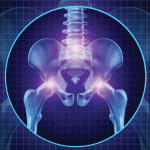 SAN DIEGO—Managing pain due to rheumatic diseases involves more than active pharmacologic treatment, and the steps patients take on their own to relieve their symptoms is being increasingly recognized as fundamental to good care, according to an expert at ACR Convergence 2023.
SAN DIEGO—Managing pain due to rheumatic diseases involves more than active pharmacologic treatment, and the steps patients take on their own to relieve their symptoms is being increasingly recognized as fundamental to good care, according to an expert at ACR Convergence 2023.
In the session, panelists discussed study results that show self-management works, tools that are emerging to put self-management to better use and the still-early, but promising, realm of virtual reality in self-management.
Beyond the Clinic
David Williams, PhD, professor of anesthesiology, internal medicine, rheumatology, psychology and psychiatry at the University of Michigan, Ann Arbor, Mich., said that patients may see a clinician for medication, but efforts to help their quality of life don’t stop there.
“That patient has to go home. And when they go home, they have to decide whether they’re going to adhere to the recommendations that they’ve gotten from these providers,” he said. “And chances are, they’re also going to experiment a bit about things they have found that help make their pain less intense.”
Self-management is what patients do at home and on their own. “Good care does combine the two,” he said. “You combine those two [elements], and you get whole-person health.”
Research has suggested that using digital options for pain self-management typically has a small- to medium-effect benefit. Some results actually rival the results of traditional care, Dr. Williams said.
A meta-analysis on self-management for chronic widespread pain found it reduced short- and long-term pain compared with usual care, but with few differences on pain and function compared with active treatment.1
Another meta-analysis, on knee osteoarthritis, found benefits in terms of pain, stiffness and quality of life.2
At-Home Resources
“In addition to more traditional forms of care, we’re seeing an emphasis on what the patient can be doing and helping to structure that for the patient,” Dr. Williams said.
In the book Chronic Pain Reset, Afton Hassett, PsyD, provides readers with 30 evidence-based strategies or activities for better managing pain and increasing well-being, while connecting readers with online resources. She also describes the neuroscience of pain in digestible terms, as well as the role of thoughts, emotions and behavior in pain processing, Dr. Williams noted.
“It’s not just a book that you read, but it’s an interactive type of book [in which] you’re able to learn about the things you could be doing to manage the pain more successfully,” he said.

